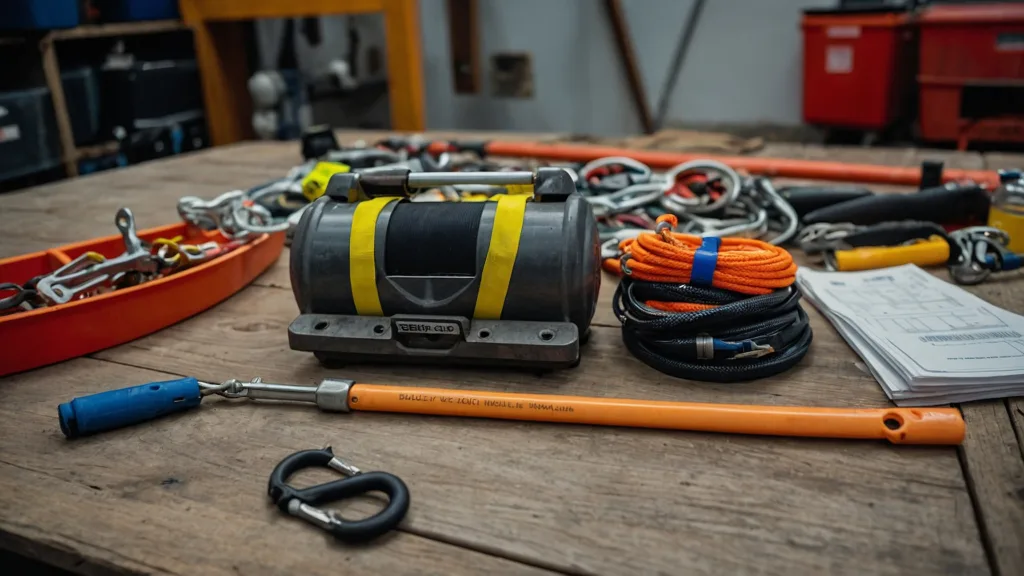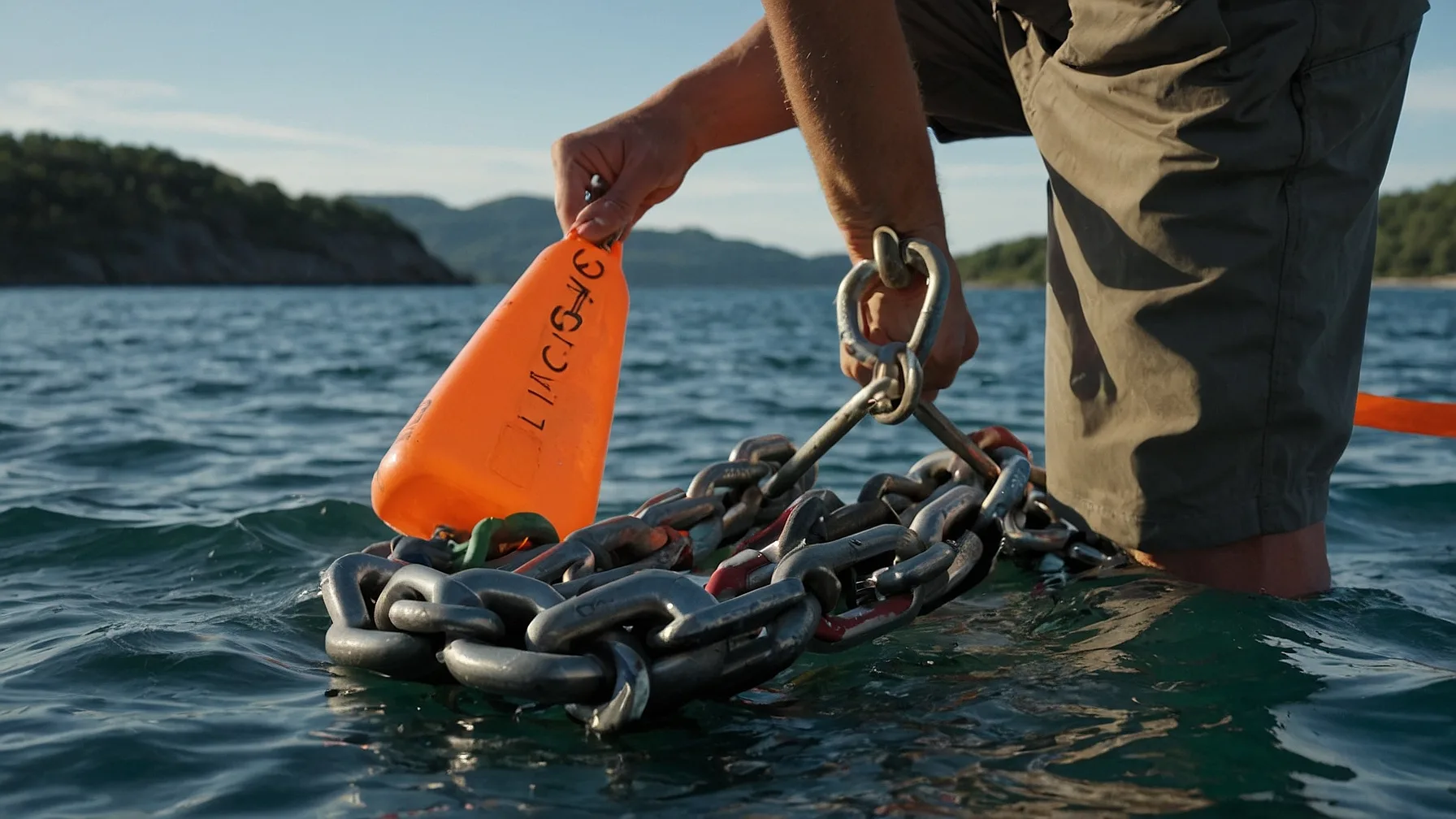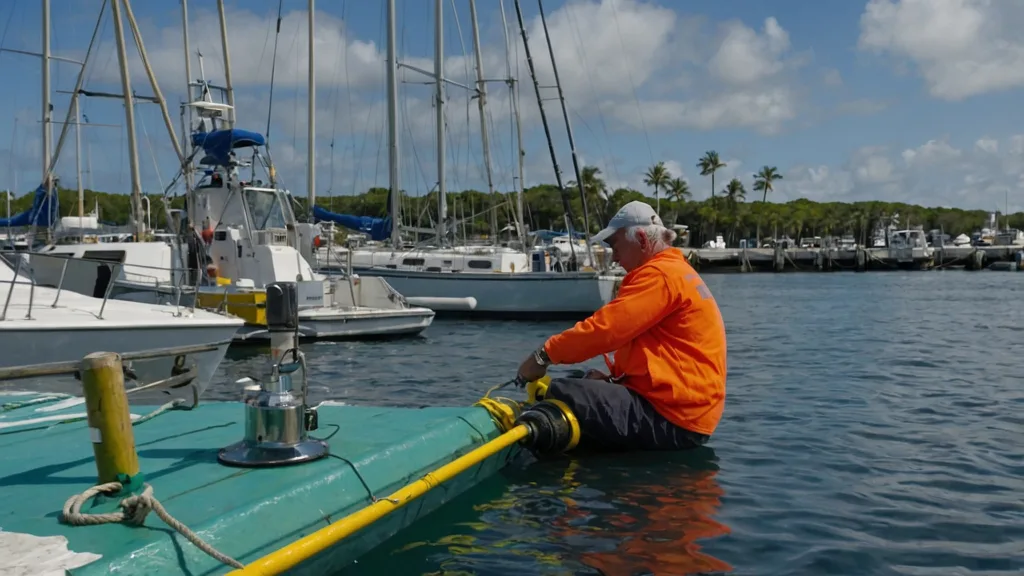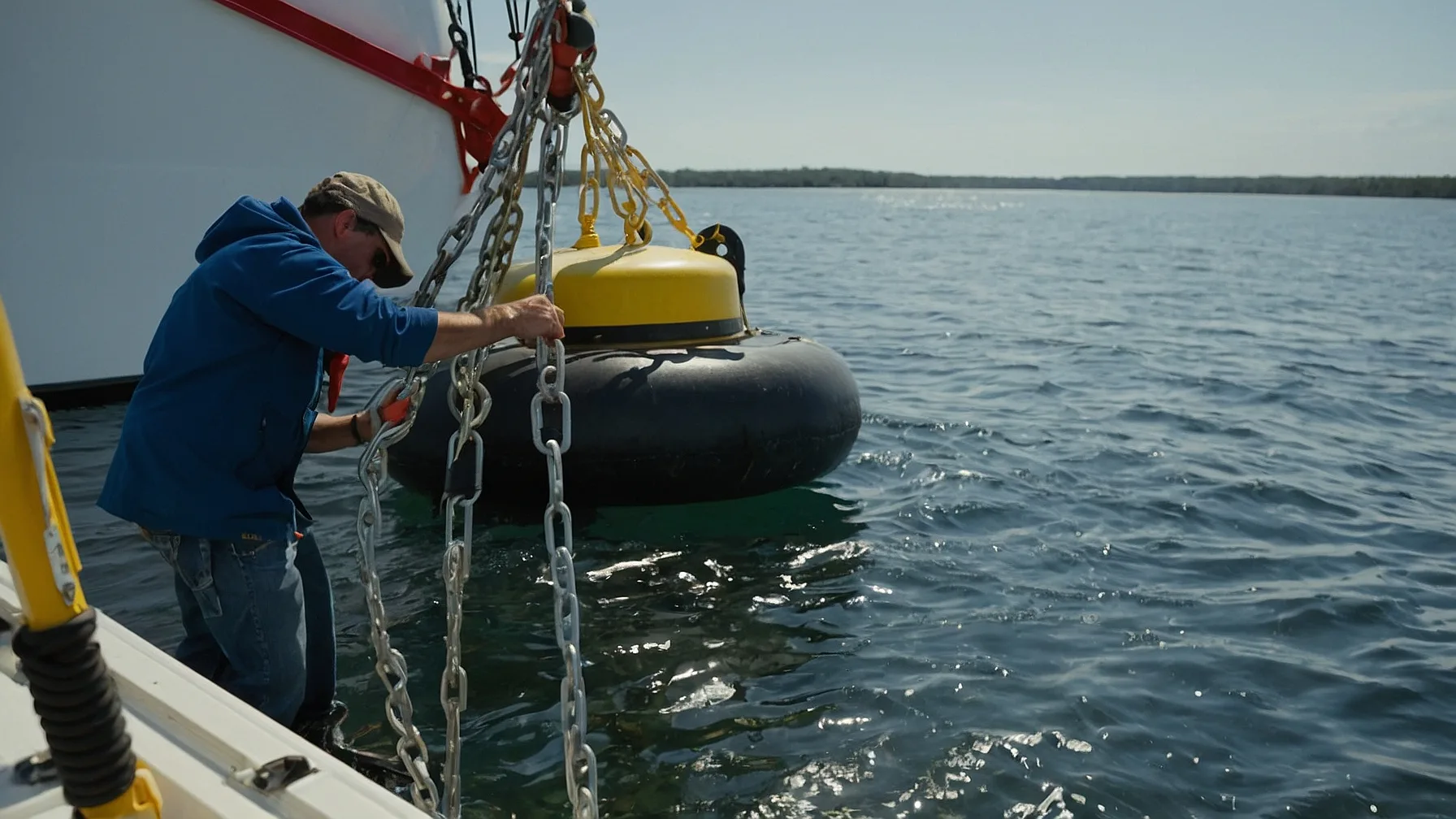Have you ever wondered “How to install a mooring buoy” If you’re a boater, sailor, or anyone who enjoys the water, you may have heard about mooring buoys. How to install a mooring buoy? They are incredibly useful for keeping your boat safely anchored when you’re not around. Whether you’re keeping your boat in one spot for the night or for the long term, a well-installed mooring buoy can provide peace of mind, knowing your vessel is securely tethered. Lets get into the blog “How to install a mooring buoy”.
However, installation of a mooring buoy might seem like a daunting task, especially if you’ve never done it before. Don’t worry, though this guide is designed to make the process as easy as possible. From selecting the right equipment to laying down the correct installation procedure, we’ll walk you through everything you need to know.
So, if you’ve been asking yourself, “How do you install a mooring buoy?” or “How to install mooring buoys?”, you’ve come to the right place!
Table of Contents
What is a Mooring Buoy?
Before we dive into the main depth of how to install a mooring buoy, let’s first clarify what a mooring buoy is.
A mooring buoy is a floating device anchored to the seafloor that allows boats to be secured to it. These buoys are typically made from durable materials like plastic or heavy-duty rubber and are designed to withstand harsh marine conditions. The buoy itself is attached to a chain, line, or other mooring equipment that is anchored to the bottom of the water body, keeping the buoy in place.

In short, a mooring buoy serves as a safe, easy-to-use alternative to traditional anchoring systems, providing an anchor point for your boat without needing to drop an anchor every time.
Why Install a Mooring Buoy? | How to Install a Mooring Buoy?
Before jumping into the installation procedure, you may wonder why you should install a mooring buoy in the first place. Here are a few benefits of using mooring buoys:

- Convenience: A mooring buoy eliminates the hassle of having to drop and retrieve your anchor every time you dock or depart.
- Safety: Mooring buoys provide a secure anchoring system that can prevent your boat from drifting, especially in bad weather or when there are strong currents.
- Protects the Marine Environment: Mooring buoys reduce anchor damage to delicate seabed habitats, making them a more environmentally friendly option.
- Protects Your Boat: With a well-maintained mooring buoy, your boat is less likely to drift into rocks, docks, or other boats, ensuring its safety when docked for an extended period.
Tools and Materials Needed for Installing a Mooring Buoy
Before starting the installation process, it’s crucial to ensure you have the right tools and materials on hand. Here’s what you’ll need:

- Mooring Buoy: Select a buoy that is suitable for the size of your boat and the water conditions where you plan to install it.
- Mooring Rope: This is used to attach your boat to the buoy. It’s important to choose a strong and durable mooring rope that won’t degrade quickly in saltwater.
- Chain and Shackles: To secure the buoy to the seabed, you’ll need a chain and appropriate shackles.
- Anchor: A heavy-duty anchor (such as a mushroom anchor or deadweight) is necessary to hold the mooring system in place.
- Buoy Marker: This marker will help identify your mooring buoy to other boaters. It’s typically a flag or a light.
- Swivels: A swivel is essential to prevent the mooring rope from twisting, ensuring the buoy remains free to move with the currents.
Now that you know what to gather, it’s time to move on to the installation.
Also Read: What Is Docking? 9 Best Things You Must Know About Docking
How To Install a Mooring Buoy?
Installation of a mooring buoy involves several key steps, each of which must be followed carefully to ensure the system is secure and effective. Let’s break it down about: How to install a mooring buoy.

1. Choose the Right Location
The first step in installing a mooring buoy is selecting an appropriate location. Here are a few factors to consider when choosing your site:
- Water Depth: Ensure the depth of the water is suitable for your mooring system. Typically, the mooring should be placed in water at least 10 feet deep.
- Distance from Shore: The mooring buoy should be placed at a safe distance from shore to prevent your boat from drifting onto land or into shallow areas.
- Avoid Obstacles: Make sure the area is free of rocks, reefs, or other underwater hazards that could damage your equipment or your boat.
- Current and Wind: Consider the direction of prevailing winds and currents. The mooring buoy should be placed so that it allows the boat to stay in position without the danger of drifting away from safe waters.
2. Set Up the Anchor
The next step in the mooring buoy installation process is setting up the anchor. Here’s how you do it:
- Position the Anchor: Depending on the type of anchor you’re using, position it at the chosen location on the seabed. For example, a mushroom anchor should be placed upside down to bury itself in the mud and secure the mooring system.
- Attach the Chain: Connect a heavy-duty chain to the anchor. The chain should be long enough to reach the bottom of the seabed but not so long that it creates slack or allows the buoy to drift away.
- Shackle the Anchor: Secure the chain to the anchor using a strong shackle. Ensure the shackle is tightened properly to prevent any slipping.

3. Attach the Buoy to the Anchor
With the anchor in place, you can now attach the mooring buoy to the anchor using the chain:
- Secure the Chain to the Buoy: Attach the other end of the chain to the mooring buoy. This is usually done by connecting the chain to a central ring or shackle on the buoy.
- Use a Swivel: Incorporating a swivel into the setup will prevent the mooring rope or chain from twisting, ensuring the buoy moves freely with the currents.
4. Install the Mooring Rope
Once the buoy is anchored, it’s time to attach the mooring rope to your boat. The rope should be long enough to reach the buoy but not so long that it creates unnecessary slack. Here’s how to go about it:
- Choose the Right Rope: Make sure to select a rope that is long enough to connect your boat to the buoy while also being strong enough to withstand rough weather conditions.
- Secure the Rope to the Buoy: Tie one end of the rope to the mooring buoy. You can use a bowline knot or a cleat hitch, depending on your preference.
- Attach the Rope to Your Boat: The other end of the mooring rope should be securely fastened to a strong point on your boat, such as the bow cleat.
5. Test the Mooring System
Before leaving your boat on the mooring buoy for an extended period, it’s essential to test the system:

- Check for Stability: Ensure the mooring buoy holds your boat in place without excessive movement or drifting.
- Inspect for Weaknesses: Check the chain, shackles, and ropes to ensure everything is secure and in good condition.
- Test for Flexibility: The buoy should move freely with the currents, but it shouldn’t drag or put undue stress on the boat.
6. Mark the Buoy
After the mooring buoy is installed and secured, mark the buoy with a visible marker, such as a flag or a light. This will ensure other boaters can see your buoy, reducing the risk of collisions or accidents.
Mooring Buoy Installation Video
Common Mistakes to Avoid When Installing a Mooring Buoy
Even experienced boaters can make mistakes when installing a mooring buoy. To help you avoid these common pitfalls, here are some mistakes to watch out for:
- Incorrect Anchor Size: Using an anchor that’s too small for the water conditions or the weight of your boat can result in the buoy becoming dislodged. Make sure the anchor is large and heavy enough for your needs.
- Not Testing the System: Always test the system after installation. Failing to do so can result in unexpected problems when you return to your boat.
- Improper Rope Length: If your rope is too long or too short, it can cause your boat to drift or put too much strain on the mooring system. Ensure the rope is the proper length.
- Neglecting Regular Maintenance: Over time, the mooring system can wear out due to exposure to the elements. Regularly check the buoy, chain, and ropes to ensure everything is in good condition.
Conclusion
Let’s wrap this post “How to install a mooring buoy”. Installation of a mooring buoy is an essential skill for boaters who want to ensure their vessel stays securely in place when not in use. By following the steps outlined in this guide-choosing the right location, setting up the anchor, attaching the buoy and mooring rope, testing the system, and marking the buoy-you can ensure that your mooring system is effective and safe.
Remember, proper installation and regular maintenance are key to keeping your mooring buoy in top condition. So, take your time, follow the procedures carefully, and your mooring buoy will serve you well for years to come.
FAQS
What is the cost to install a mooring buoy?
The cost to install a mooring buoy typically ranges from $500 to $2,000. This includes the cost of the buoy, anchoring system, and installation. DIY installations can be more affordable, while professional installation may add additional costs. You may also need to account for any required permits, which can vary by location.
Can I put a mooring buoy anywhere?
No, you can’t place a mooring buoy just anywhere. You need to consider local regulations, water depth, and the environment. Some areas require permits, and certain locations may have restrictions due to navigation, fishing zones, or protected areas. Always check with local authorities before installing a mooring buoy.
What is the best anchor for a mooring buoy?
The best anchor for a mooring buoy depends on the water conditions and seabed type. Common options include:
Mushroom anchors: Great for soft, muddy bottoms, as they provide excellent holding power.
Fluke anchors: Suitable for sandy or gravel bottoms and are easy to handle.
Deadweight anchors: Ideal for deep waters, providing a high level of stability.
How to calculate anchor size?
Anchor size depends on your boat’s weight and water conditions. A general rule is:
Boats up to 25 feet: 10-15 lbs anchor
Boats 25-40 feet: 20-35 lbs anchor
Boats over 40 feet: 40+ lbs anchor
What is the minimum spacing for anchors?
The minimum spacing between mooring buoys or anchors should typically be at least 1.5 to 2 times the length of your boat. This ensures enough room for boats to swing without interfering with each other, considering tides and winds. For example, if your boat is 30 feet, aim for at least 45-60 feet of spacing between anchors.



One Comment